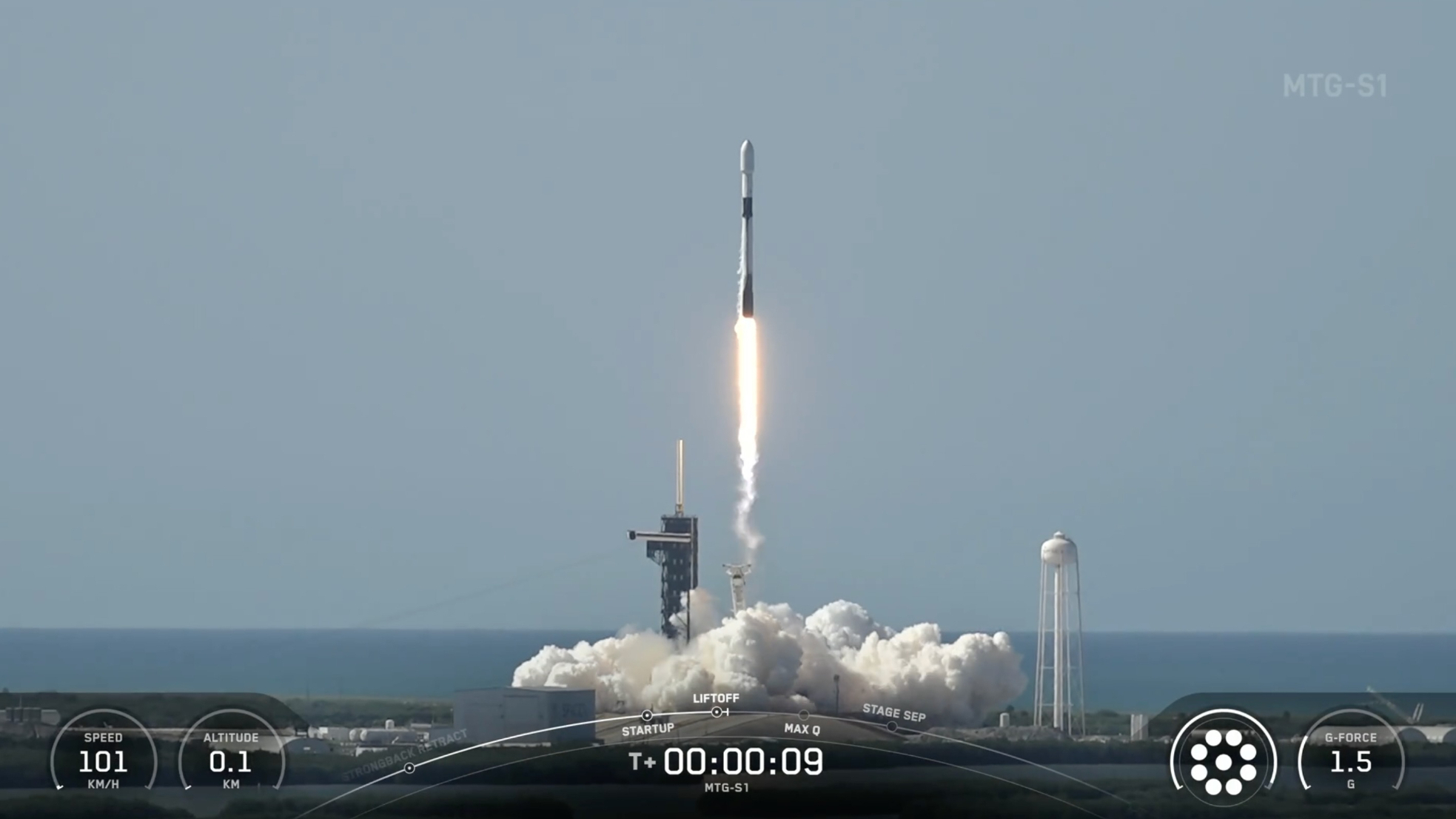Titan 4 Rocket Fueled for Secret Satellite Launch
The final Lockheed MartinTitan 4 rocket to launch from Cape Canaveral will soar up the U.S. easternseaboard Friday night carrying a mysterious military payload.
Clogs in launch pad fuellines caused by corrosion put a hold on the launch in early April, forcingtechnicians to replace a pump and install additional filters to overcome theproblem. At last, the nitrogen tetroxide was loaded into the booster's first andsecond stages on Sunday and Monday to clear the way for this week's liftoff.
Launch from Complex 40 willhappen sometime between 8:00 and 10:30 p.m. EDT (0000-0230 GMT), beginning a9-minute, 30-second ascent to deliver the secret spy satellite payload intoEarth orbit for the U.S. National Reconnaissance Office.
The exact target launchtime remains under wraps.
Air Force weatherforecasters predict better than a 90 percent chance of acceptable conditionsfor launch with only a slight possibility of coast showers. The outlookpredicts a few clouds at 3,000 feet and scattered at 28,000 feet, goodvisibility, southeasterly winds at 10 gusting to 15 knots and a temperature of70 to 72 degrees F.
Unlike virtually all pastTitan 4s flown from the Cape that were fitted with Inertial Upper Stages orCentaurs, this $411 million rocket has no upper stage.
But Titan 4s lacking suchan additional kick motor are typical for missions launched from Vandenberg AirForce Base, California. And, in fact, the Pentagon acknowledges moving thismission from the West Coast to Cape Canaveral about two years ago.
Breaking space news, the latest updates on rocket launches, skywatching events and more!
Given the classified natureof the payload, officials will not comment on the satellite's purpose or theexact orbit it is destined to occupy.
Space watchers have speculatedthat the clandestine cargo nestled inside the rocket's 66-foot long nose conecould be the fifth in a series of radar imaging spacecraft, commonly calledLACROSSE.
The sophisticatedintelligence-gathering craft probably use a synthetic aperture radar system toobserve strategic targets around the globe in both daylight and darkness fromorbital perches 420 miles above Earth. The eyes-in-the-sky can pierce clouds,detect objects a few feet across and even reveal underground structures likemilitary bunkers.
These satellites have beenlaunched from the Cape aboard shuttle Atlantis in 1988 and from Vandenberg onthree unmanned Titan 4s in 1991, 1997 and 2000.
The first and thirdsatellites were placed into 57-degree inclination orbits, which means the craftfly as far north and south of the equator as 57 degrees latitude. The secondand fourth LACROSSEs were placed into 68-degree orbits to cover more of theplanet.
Although the targetedinclination for Friday's launch has not been disclosed, hazard warnings issuedto mariners and Canadian oil platforms confirm the Titan 4 is headed up theAtlantic seaboard.
"The northeasttrajectory will result in a quasi 60-degree orbital inclination, similar tothose of the LACROSSEs," said Ted Molczan, an experienced and respectedhobbyist satellite observer from Toronto, Canada. "LACROSSE was the onlyVandenberg Titan 4 payload to combine a quasi 60-degree orbital inclination anda 66-foot fairing."
There are otherpossibilities for the payload's identity. Two of 26 previous Titan 4s from theCape featured no upper stages and flew into high inclination orbits, but thoseflights in 1990 and 1996 lofted ocean surveillance and data relay satellitecargos not thought to be strong candidates for Friday's launch.
"Both missionsfollowed trajectories similar to the upcoming launch, but their payloads havelong since been replaced by newer generations, which employed Atlas 2 and 3boosters," Molczan noted.
Space experts are relyingon hobbyists watching the skies to spot the new object following launch todetermine what the Titan 4 has really carried aloft.
This liftoff ends the Titanera at Cape Canaveral after five decades of flights, including Titan 1missiles, Titan 2 boosters launching Gemini astronauts, Titan 3s with Vikingand Voyager, Titan 34D carrying critical military satellites and the past 16years of Titan 4.
Vandenberg hosts the finalTitan 4 launch in July when another hush-hush payload is deployed for the NRO.The satellite will be shrouded inside a "modified version of a standardTitan 76-foot payload fairing," according to the Air Force. Such a nosecone has never been used on the previous 11 Titan 4s from the West Coast.
The Titan name is fadinginto history as the Atlas 5 and Delta 4 rocket families in the EvolvedExpendable Launch Vehicle program provide the U.S. government's primaryheavy-lifting needs for the foreseeable future.

Join our Space Forums to keep talking space on the latest missions, night sky and more! And if you have a news tip, correction or comment, let us know at: community@space.com.
Justin Ray is the former editor of the space launch and news site Spaceflight Now, where he covered a wide range of missions by NASA, the U.S. military and space agencies around the world. Justin was space reporter for Florida Today and served as a public affairs intern with Space Launch Delta 45 at what is now the Cape Canaveral Space Force Station before joining the Spaceflight Now team. In 2017, Justin joined the United Launch Alliance team, a commercial launch service provider.
